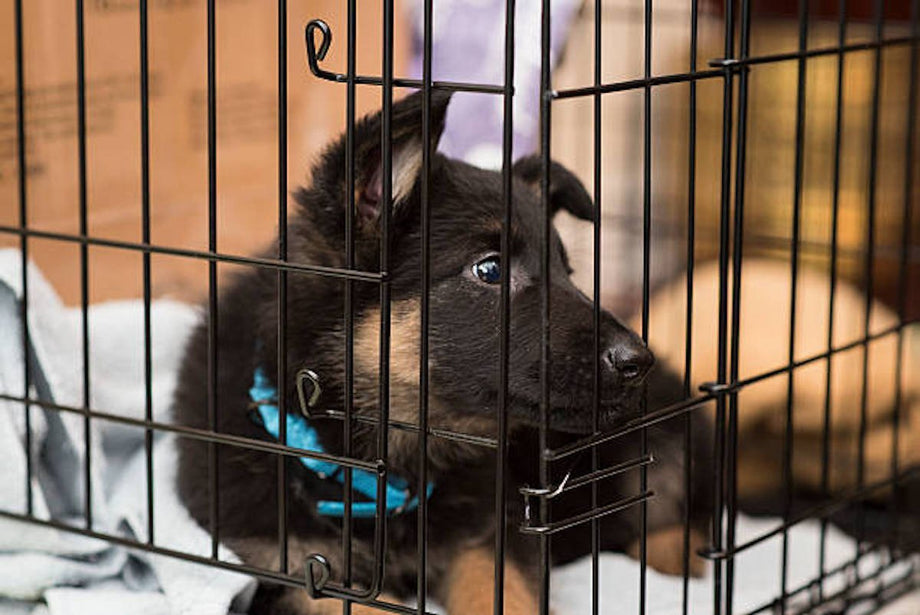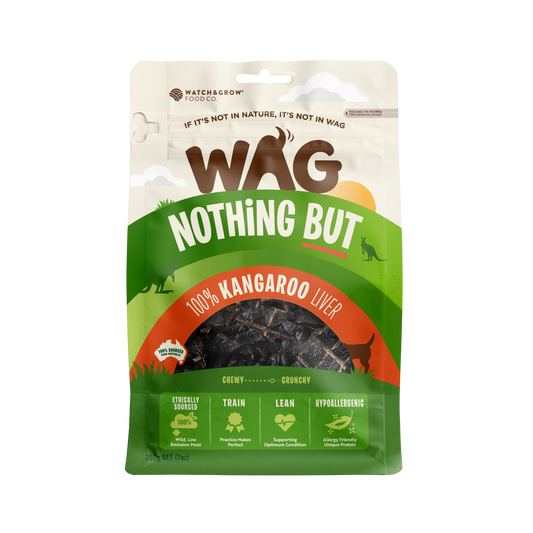If you’re a dog owner, dog lover or researcher of all things dog, you’ve likely heard the term crate training.
Crate training can certainly be a divisive topic, occasionally inspiring controversy in doggo forums, Facebook groups and pages. Just like anything, the internet is jam-packed with loud and contradictory opinions about crate training. Some balk at the term, while others consider it the holy grail of responsible dog ownership. Some sing its praises, while others tip their nose to the practice.
We get it. Ultimately, all anybody wants to do is give their doggo the best care possible. You’ve got the best intentions but you’re frightened of making mistakes. You can’t quite see through the fog of online misinformation and discord so you’re on the hunt for some answers.
We’ve got you.
Stick around while we explore the in’s and out’s of crate training: unpacking the basics, laying down the benefits, and demystifying the process for the best chance of crate training success.
What is crate training?
Simply put, crate training means acclimating your dog to going in, spending time and sleeping comfortably in a confined space.
Although it plays into some of your dog’s ancestral needs and behaviours, it’s called crate training because it doesn’t always happen immediately – or without some effort. Correctly and humanely crate training your dog requires a serious commitment of time, effort and energy; and while some doggos take to it like a fish in water, others can struggle.
Starting to sound daunting? Don’t worry. With some determination and the right tools, crate training is more than achievable, and both you and your doggo will be better off for it.
Is crate training humane?
Done correctly, crate training is perfectly humane and can be a phenomenal tool for most doggos out there. It’s supported by many of the leading dog organisations across the globe, including the RSPCA, the AKC and veterinarians everywhere.
With that being said, there are right and wrong ways to crate train. It’s essential to do the research and avoid the most common pitfalls made by well-meaning owners before you.
Crate training doesn’t come with a magic wand; while it does boast a broad range of benefits it’s not always easy, and definitely isn’t a cure-all. But for most doggos, the upsides to crate training is undeniable.
Why does crate training work so well?
For some of us, the idea of spending time in an enclosed crate makes our skin crawl. If tight spaces can cause such intense claustrophobia in humans, how on earth can they be a place of comfort and contentment for our doggos?
Crate training taps into the most primal, ancestral bits of your dog’s brain: the one perfectly designed to survive the wild before we domesticated them.
Dogs are maternal den animals. This means that in the wild, young pups were birthed, raised and nurtured by their mother in a den that would protect them from the outside threats and any looming predators. In their most vulnerable life stage, wild pups were safest in a space that was small, sheltered and enclosed away from the wider world.
The difference between dogs and more traditional den animals is that eventually, around eight to twelve weeks, pups would begin to stray away from dens and begin their lives as roaming predators. It’s for this reason that crate training can be a little more difficult to teach to a dog – unlike for example, a rabbit – as we’re tapping into an instinct that may eventually weaken without a little guidance.
The point is: there’s a very good reason why crate training just works. But it’s also perfectly okay, and normal, for you to encounter some speed bumps on the road to crate training mastery.
What are the benefits to crate training?
Now for the real nitty gritty stuff – the stuff you’ve probably been waiting to hear. What ways crate training can make your life easier, your doggo’s life easier, and help pave the way for a well-adjusted canine.
Toilet training
Crate training is considered to single-handedly be one of the best and mostly mess-free ways to quickly and easily housebreak puppies.
This harkens back to the den animal fact. Doggos are relatively clean animals, and seriously dislike sleeping in or near their own waste. This is especially true in their den, a place they associate with warmth, safety and comfort – not as a toilet. For this reason, most puppies will go to great lengths not to soil their crate, including learning to hold on until they’ve got an opportunity to go outside rather than squatting wherever they please.
Crating your puppy when you cannot supervise them, or throughout the day as part of your normal crate training routine, is a perfect way to prevent accidents and build appropriate pooping habits. For best success, make sure you’re:
- Only crating for age-appropriate periods of time. Puppies have teeny tiny bladders, and it takes time for them to have much capacity at all. Experts suggest no more than 1 hour per month of age.
- Using the correct sized crate: not too small so that they’re uncomfortable, but not too large so that they can pick a potty corner.
General anxiety and separation anxiety
For doggos that have been correctly acclimated to the crate, there’s no better space to feel safe, comfortable and cozy. They view it as kind of like their bedroom, a space that belongs to them and that brings good things (like naps, puzzle toys and treats.)
This makes the crate a fantastic tool for combatting anxiety. The dim, enclosed and quiet space can encourage feelings of relaxation and safety, allowing nervy dogs to take a sigh of relief.
Crate training is particularly useful for doggos who suffer from separation anxiety or storm phobias. For dogs who struggle with having company over, popping them in their crate in a closed room can reassure them they won’t be bothered.
Preventing destruction
Doggos like to eat things. We know this better than most, and it’s why we recommend keeping a range of boredom busting treats at your disposal at all times.
Being destructive is a normal part of canine behaviour, particularly during puppyhood. Without supervision, it’s not unusual (and surprisingly easy!) for a doggo to rip apart a bed, couch, cushion or part of the drywall in pursuit of fun. In case the destruction wasn’t bad enough, some doggos might then decide to consume whatever inedible item they’ve got their paws on.
Intestinal obstruction or blockages are the second-most common insurance claim amongst dogs, and can cost upwards of $3,000. Besides the obvious pain and risk related to going through a surgery, many pet owners struggle to find these funds in an emergency situation – leading them to make sometimes impossible, devastating decisions.
There’s no better way to prevent destruction than to contain your doggo in the safety of a crate. Behind four sturdy walls, it’s impossible for them to chew you out of house and home.
The vets, the groomers and daycare
Often owners will ponder why bother crating at all if they don’t intend to do it for their doggo’s lifetime. And that’s totally understandable – many people phase out the frequency of which they crate once they survive the adolescent years. But even if you end up collapsing your crate at home, there are tons of other places your dog might encounter one.
It’s likely your dog will visit the groomer at some point in their lifetime. For particular breeds, this could be as frequent as every 6 weeks. For the vets, it’s recommended to book a check-up annually to ensure your doggo is in good health.
Each time, it’s highly likely that they’ll be popped away in a crate to keep them safe until your arrival. The experience will be much more positive – for you, your doggo, and the staff – if they can spend the time snoozing and unbothered, rather than scrambling to escape. Particularly if your doggo has an injury, stitches, or is recovering from anaesthesia!
How to crate train your dog
First things first: you need a crate.
Wire crates are the most commonly used as they’re sturdy, difficult to chew, with great ventilation. Plastic or airline crates are another option for owners in a pinch or smaller breeds, as a determined dog could more easily destroy one. Impact crates are a fantastic investment for owners with anxious or Houdini doggos, if you’re prepared for the cost.
When picking the size of your crate, keep two things in mind:
- your doggo can stand up, turn around and lie down comfortably, and
- your doggo does not have too much space.
You want the crate comfortable, safe and cozy – not cramped!
For puppies who’ve got growing to do, we’ve got good news for you: most crates come with a metal divider to place in the middle, keeping them confined to a small space while giving them room for the future.
If you’ve purchased a fancy, fluffy new bed (with an astronomical pricetag) for your puppy, put it aside for now. For the first few months, your doggo might be enticed to chew on whatever they’re crated with – which is a pain in the hip-pocket and an obstruction risk.
Until your puppy has proved they’re not going to consume a nice bed whole, stick to chew resistant mats or a folded up towel.
Keep it simple, slow and always positive
The absolute last thing you want to do is associate the crate with stress. It’s important to work at a speed your doggo is comfortable with, staying in tune with their body language and any potential stress signals.
Work in increments, taking steps forward and back when necessary. If the race feels slow, remember that the finish line will be more than worth it.
Acclimate to the crate
This step is all about building a strong positive relationship between your doggo and the crate. It’s essential they learn that really great stuff happens there – like getting meals, treats, puzzle toys and chews – so that they’ll want to keep coming back to it.
Never start out by chucking your dog in and locking the door. Some doggos have very little experience with confinement, and a metal, creaking crate can be understandably intimidating at first glance.
Begin by opening every door your crate has, making it a wide open space that your dog can enter and exit as they please. Spend a few quick, clear and positive sessions dropping high-value treats inside the crate, encouraging your pup to step in and out willingly.
Once your doggo is doing this step confidently, you can move up to incorporating meal time into your crate training. Start by popping their bowl in the front of the crate; once they’re chowing down with ease, you can start moving it over the coming days until it’s at the very back wall. Feeding all your doggo’s meals in the crate is a fantastic way to kick-start the process, and is incredibly effective in making their new sleeping quarters feel safe.
The most integral thing about crate training is to keep your sessions fun! Once your doggo is comfortably going in and out of their crate, incorporate some crate games to reinforce their skills and keep building on that positive association.
Closing the door
Once your pup feels completely safe in the crate, and understands that it’s the very best place to receive delicious treats, you can work up to the next big step: closing the door.
Start by dropping a handful of your dog’s favourite treats in their crate. Once they’re inside, head down and happily eating, close the door very briefly. This is important: it’s integral to open the door before they’ve stopped eating. If you can end the session with your doggo noticing that the door has closed – but not stressing about it – and still happily hopping in & out afterwards, you’ve won!
Do this until your dog associates the crate door closing with a jackpot of irresistible treats, and isn’t rushing out at a break-neck speed when the door opens.
Start increasing the duration by introducing longer-lasting (but still very high-value) treats. Kongs and goat horns stuffed full of peanut butter, mince meat or wet food are fantastic options for this. Other doggos may find Lickimats or snuffle toys as the best alternatives. It’s up to you to find your doggo’s favourite!
Increasing the duration
When your doggo shows zero signs of stress or anxiety when hanging out in their crate, you’re ready to start upping the duration.
It’s usually around this step that things can get a bit sticky. Most doggos at some point will test the boundaries by whining or crying to be let out. Make sure you can distinguish between an “I don’t want to!” complaint and “I’m panicking!”
If you’ve put the time in and built a strong foundation that the crate is a happy place, there’s nothing to fear – it’s normal for a puppy to at first protest when they can’t leave at will, but soon settle down and relax until that time comes. However, if your pup finishes their treats, notices they can’t immediately get out and starts to panic, it’s definitely a sign to take a step back and slow down.
Work up your pup’s time spent in the crate in 5-to-15 minute increments, depending on how well they’re settling in to the process. Some doggos need more help generalising than others, so it’s important to practice crating your dog while you’re hanging out in the same room, static; when you’re wandering about, doing chores or activities; when you’re out of the room, but in the house; and when you’re out of the house entirely.
Smooth the process by leaving your dog with a long-lasting chew (like an antler or goat horn) or a durable toy. Steer clear from soft toys, rope toys, and anything that could present a choking hazard to your doggo while you’re unable to supervise.
Mistakes to avoid while crate training
Crate training is a phenomenal tool, but it’s important to avoid some key mistakes when acclimating your doggo to the crate. Never:
- use the crate as punishment,
- allow your puppy to toilet in the crate,
- crate excessively, creating a negative association, or
- reward your dog for tantruming by giving them attention (or releasing them) as soon as they whine or cry.
It’s never too late to crate train
While puppies are generally the easiest age group to crate train, it’s never too late to teach an old dog new tricks. Crate training can benefit dogs of all ages, and offer serious relief to seniors who may have suffered a lifetime of separation anxiety and insecurity.
Whether it’s a tool you’ll use every day or only rarely, we think crate training is worth the time for each and every doggo out there.
So if your doggo is a spring chicken or a silver fox, our recommendation? Crack open a fresh bag of treats, pull out a crate, and get training. There’s no better time to start than now.
Shop the Recipe
Gemma Sheehy





